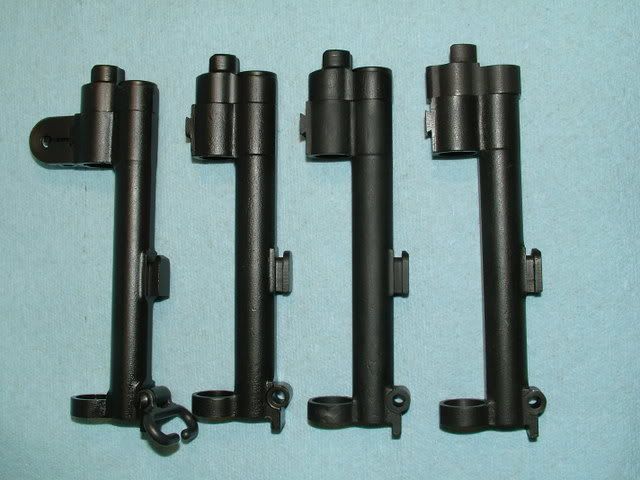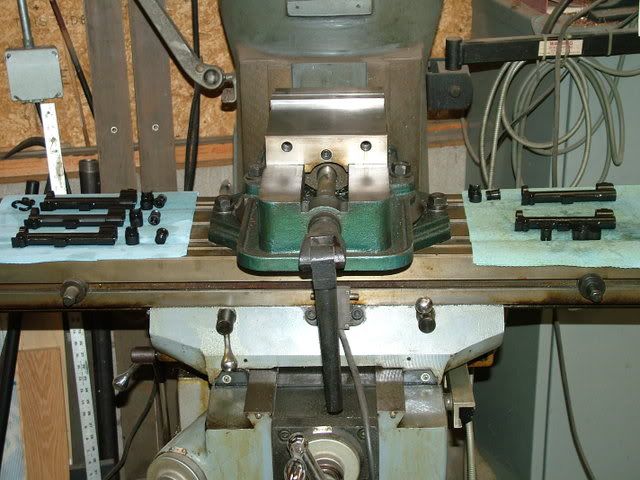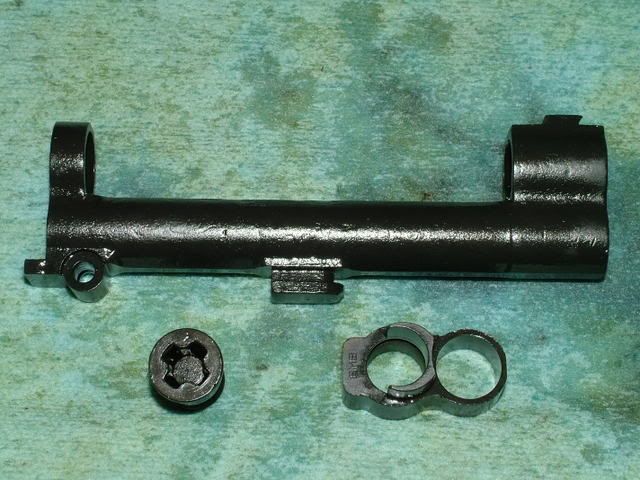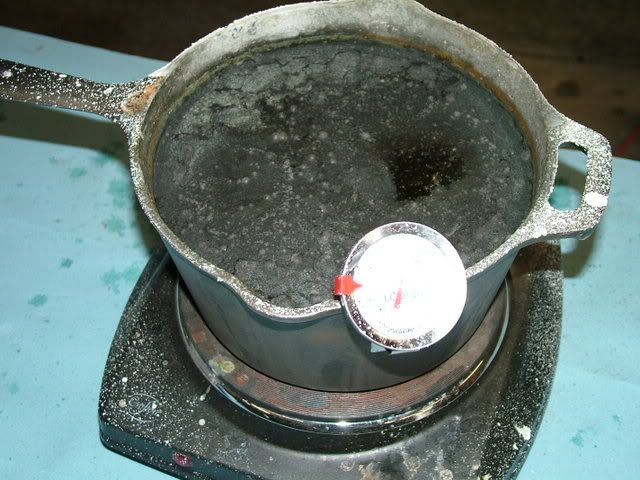The subject came up over on the CMP forum about blackening gas cylinders and possibly using powder coating to get a good durable finish. Below was my response and I got to thinking that it might be of interest over here too.
I tried powder coating. It was a miserable failure. If you allow it to get on the sight platform, a front sight will not fit. If you don't, you have a white area under the front sight that is very unsightly. It's the same thing with the front face of the gas cylinder. You have to mask it off, or your don't get a decent seal with the gas lock. If you do mask it and the contour of the gas lock is not a perfect match, you get an unfinished seam. It is, however, very tough. To get it off in order to save the gas cylinders and locks we tried it on, I had to switch my blasting cabinet from glass beads to crushed garnet.
As for spray on finishes, I have had to bead blast just about everyone of them off of various gas cylinders at one time or another. I figure the tougher they are to bead blast off, the tougher the finish must have been. I find that the various heat resistant and BBQ paints blow off about as fast as you can wave the wand. Brownell's Alumihyde bake on finishes are better. But the most resistant to abrasion, atleast by bead blasting, is Brownell's matte black Gun Kote.
I have tried the Caswell's stainless steel blackener with mixed results. I have had some gas cylinders turn a very nice black, others varying shades of gray, and a few just lay there in the solution as bright and shiny as they went in. It depends on the composition of the stainless steel which did vary somewhat over the 30 year production history of the M1 Garand rifle.
If I were a home hobbyist working in my basement or garage, I would go with the Brownell's Gun Kote in matte black. It is just a touch glossier than original, but fairly close. It resists gun solvents very well and is tough. Bayonets will eventually scratch it. But you can touch it up as needed. If you don't have sand or bead blasting equipment, brake cleaner and steel wool should be enough preparation.
The one true way to duplicate the original arsenal finish is to dip the part for 20 minutes in a 720 degree zinc dichromate molten salt bath. Of course, this is a little expensive, very dangerous, and will eventually give you cancer. So the next best way is Brownell's Oxynate #84 stainless steel hot bluing compound. You bead blast the parts to clean bare metal, dip for 60 seconds in muratic acid, distilled water rinse, and into the 275 degree Oxynate #84 for four to eight minutes. This is followed by a distilled water rinse and wipe dry followed by a good hosing down with a pentrating oil. I have found this to work well with all gas cylinders and locks. I have ran into a few HRA gas lock screws that would not blacken completely.
In the picture below, the gas cylinder and lock on the extreme right are new unissued USGI taken from the the grease wrap. The rest are two SA's and a WRA all refinished with Brownell's Oxynate #84.
![Image]()
Out of the brew and layed out to be oiled:
![Image]()
A close up of one that has just been oiled:
![Image]()
This stuff is a real witche's brew and not for the faint of heart!
![Image]()
I tried powder coating. It was a miserable failure. If you allow it to get on the sight platform, a front sight will not fit. If you don't, you have a white area under the front sight that is very unsightly. It's the same thing with the front face of the gas cylinder. You have to mask it off, or your don't get a decent seal with the gas lock. If you do mask it and the contour of the gas lock is not a perfect match, you get an unfinished seam. It is, however, very tough. To get it off in order to save the gas cylinders and locks we tried it on, I had to switch my blasting cabinet from glass beads to crushed garnet.
As for spray on finishes, I have had to bead blast just about everyone of them off of various gas cylinders at one time or another. I figure the tougher they are to bead blast off, the tougher the finish must have been. I find that the various heat resistant and BBQ paints blow off about as fast as you can wave the wand. Brownell's Alumihyde bake on finishes are better. But the most resistant to abrasion, atleast by bead blasting, is Brownell's matte black Gun Kote.
I have tried the Caswell's stainless steel blackener with mixed results. I have had some gas cylinders turn a very nice black, others varying shades of gray, and a few just lay there in the solution as bright and shiny as they went in. It depends on the composition of the stainless steel which did vary somewhat over the 30 year production history of the M1 Garand rifle.
If I were a home hobbyist working in my basement or garage, I would go with the Brownell's Gun Kote in matte black. It is just a touch glossier than original, but fairly close. It resists gun solvents very well and is tough. Bayonets will eventually scratch it. But you can touch it up as needed. If you don't have sand or bead blasting equipment, brake cleaner and steel wool should be enough preparation.
The one true way to duplicate the original arsenal finish is to dip the part for 20 minutes in a 720 degree zinc dichromate molten salt bath. Of course, this is a little expensive, very dangerous, and will eventually give you cancer. So the next best way is Brownell's Oxynate #84 stainless steel hot bluing compound. You bead blast the parts to clean bare metal, dip for 60 seconds in muratic acid, distilled water rinse, and into the 275 degree Oxynate #84 for four to eight minutes. This is followed by a distilled water rinse and wipe dry followed by a good hosing down with a pentrating oil. I have found this to work well with all gas cylinders and locks. I have ran into a few HRA gas lock screws that would not blacken completely.
In the picture below, the gas cylinder and lock on the extreme right are new unissued USGI taken from the the grease wrap. The rest are two SA's and a WRA all refinished with Brownell's Oxynate #84.

Out of the brew and layed out to be oiled:

A close up of one that has just been oiled:

This stuff is a real witche's brew and not for the faint of heart!





